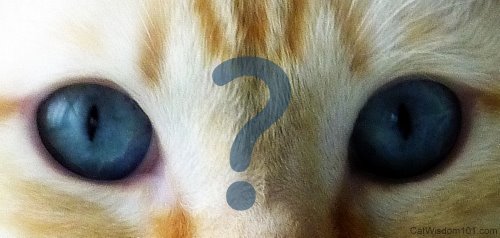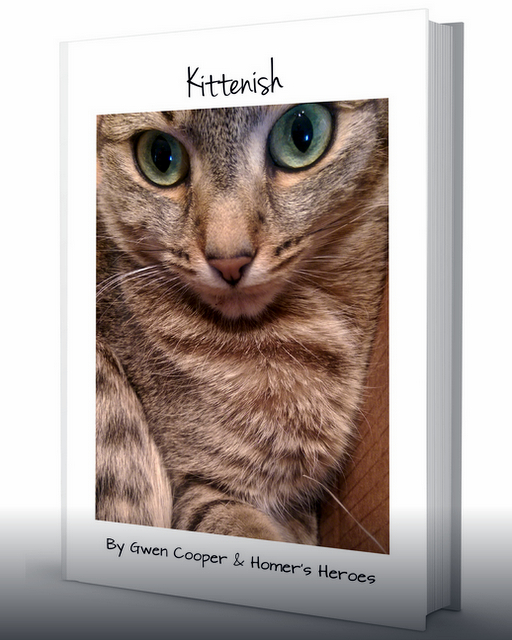
Vet Q & A and What The “F” FIP, FIV+
UPDATED 2018. This week’s Vet 101 question is: Can you demystify the different “F” diseases, FP, FIP, FIV etc.?
WHAT THE ‘F’ ???
No, it’s not what you think!

Feline Panleukopenia (FP) also known as feline distemper, is a highly contagious viral disease. It infects and kills dividing cells in the body such as those in the bone marrow, intestines, and in the stem cells of a developing fetus. The virus is spread through saliva, nasal secretions, urine, feces, prior to birth from an infected mom or after birth from her milk or bite wounds. The symptoms of FP vary from vomiting, diarrhea or lethargy and may be similar to feline immunodeficiency virus (FIV) infection, or feline leukemia virus (FeLV) infection. The first five days are critical for survival and treatment includes IV fluids, antibiotics and isolation. FP can be deadly but in most cases, once a cat recovers, it will not infect other cats through direct contact, but some recovered cats can shed the virus in their stool and urine for up to 6 weeks. The virus itself If they survive, the kitten or cat is perfectly adoptable. The virus can not be transmitted to humans. The best prevention and protection is by vaccination for indoor cats as well as indoor/outdoor cats.
Feline Leukemia Virus (Felv) is known as a “friendly cat” disease. Saliva is the most common way cats can spread the disease: sharing food bowls and grooming each other – hence, the term “friendly cat” disease. Queens can also spread the virus to their kittens in utero, by nursing, or by grooming. Kittens under 16 weeks of age are most susceptible to catching the disease. For this reason, some people advocate vaccinating all “negative” kittens against Felv to insure their protection. Adult cats seem to have more natural resistance. (But that does NOT mean it’s ok to let your healthy cat run among the Felv + cats!).
Once the leukemia virus has entered the cat, one of three things can happen: the body’s immune system can mount an attack and get rid of it (yeah!!), the virus can circulate in the blood stream and cause acute illness (and, sadly, death), or the virus can travel to the bone marrow and hide out until some time later in life when it can resurface and potentially cause cancer or other illnesses.
Understanding the potential paths the virus can take is important to know for two reasons. The first reason is testing. The famous “snap test” detects Felv virus that is circulating in the bloodstream. It is a very accurate screening test, but can take 6-8 weeks to turn positive post-exposure. The “IFA” test looks for Felv in the bone marrow, and may not become positive right away or ever. Interpretation of results can be tricky, and should spark a discussion with your veterinarian. The second reason is that Felv should be considered a possibility in any cat with an unexplained illness, regardless of prior test results. Think about it: if the virus has been hiding in the bone marrow for a long period of time, and something has made it resurface and cause illness at 6 or 7 years of age, relying on a previously negative “snap” test could miss the diagnosis.
Felv can cause a multitude of problems. Felv-positive cats are 62 times more likely to develop lymphoma than negative cats. They can develop anemia (low red blood cell count) and recurrent fevers. Felv can also weaken the immune system, making these cats very susceptible to upper respiratory and other serious infections.
So, what do you do if your cat is diagnosed with Felv? The first thing is to confirm the diagnosis, which may require additional testing. If confirmed, there is unfortunately no definitive treatment or cure for feline leukemia (although there are some experimental treatments out there). But the life expectancy for a “healthy” Felv-positive cats have been known to live beyond 15 years. Some things you can try to keep your Felv-positive cat healthy include: avoid contact with sick animals; consider vaccinating against the upper respiratory viruses to bolster the immune response; treat illnesses at the first sign of symptoms; and maintain good nutrition, and exercise, to keep the immune system strong; and, of course, give lots of love and positive energy.
Feline Immunodeficiency Virus (FIV), also known as Feline AIDS, is known as an “aggressive cat” disease. The virus must penetrate the skin, so a bite wound is the most common way of spreading the disease. (That big stray bruiser cat that fights with everyone in town is a big risk!) Queens can also spread it to kittens in utero and through milk.
Unlike Felv cats, most FIV cats are considered “asymptomatic carriers” and can live with the virus for up to 10 years or more. In fact, these cats are more likely to die of another disease. However, like Felv, FIV weakens the immune system, making the cats more susceptible to upper respiratory viruses, dental infections, skin infections, intestinal infections and cancer. FIV positive cats that are exposed to these diseases are often hit harder than “healthy” cats, and take much longer to heal.
FIV is diagnosed with a “snap” test, usually in combination with the Felv test. A positive FIV test almost always indicates active infection. The exception is young kittens born to an FIV positive queen. Young kittens possess antibodies to FIV from mom, but may not actually have the disease. So, if you have an FIV positive kitten, before panicking, have the kitten retested at 6 months of age. If it turns negative, it means mom did not pass along the disease. If it is still positive, then infection is very likely. A Western Blot test can also help confirm or rule out infection. If your cat has been bitten by an unknown feline assailant, a snap test should be performed 4 to 8 weeks post-fight, to see if FIV has been transmitted.
Unfortunately, there is no treatment or cure for FIV, although some experimental treatments have been proposed. Supportive care, good nutrition, and early treatment of concurrent diseases are very important in these kitties. Vaccination for upper respiratory viruses is also important in helping to maintain an effective immune system.
Although there is a vaccine available for FIV, the current feeling is that it is not recommended for most cats. The vaccine will cause “snap” tests to turn falsely positive, which may result in some cats unnecessarily being euthanized by shelters that screen for the disease.
Oh, and one more important FIV fact: while FIV was an important model in the discovery of HIV, FIV is NOT transmissible to people.
Feline Infectious Peritonitis (FIP) is one of those diseases that even the experts find confusing. So hang in there with me while I try to make it understandable.
FIP is caused by the feline coronavirus. Normally the coronavirus is a harmless virus that can cause diarrhea in kittens. But in some kittens, this harmless virus can mutate into a very aggressive form that causes FIP. Sometimes the mutant virus goes into a latent state, only to resurface later in life to cause FIP. The mutation can vary between cats, which is why it so difficult to diagnose FIP – there’s no one test that can detect all of the mutant viruses!
What’s important to know is that this mutant virus alters the cat’s immune system. Young cats with FIP tend to develop the “wet form” of the disease, where thick yellow fluid accumulates in the abdomen or the chest. Older cats tend to develop the “dry form”, which can cause lesions to form in the eyes, nervous system, liver, or other organs, disrupting their function.
The coronavirus is usually shed in the stool. Although the incidence of the harmless coronavirus is fairly high in cats, the number of cats that actually develop FIP is fairly low. Typically FIP is suspected in cats with a recurring fever that is unresponsive to antibiotics. Some cats become very lethargic, lose their appetite, and lose weight. Kittens raised “under foot” in places where older cats are shedding the virus in their stool are most at risk. In these situations, kittens that are weaned early and are isolated from older cats can be protected from the disease. If you can prevent transmission of the coronavirus, you can prevent the risk of FIP. Interestingly, the cats that are at the lowest risk are feral cats, as “roaming” makes contact with an infected cat’s stool less likely.
Although the coronavirus is readily destroyed by disinfectants, it can survive outside the body for up to 6 months, unlike the Felv and FIV viruses, which don’t survive for long in the environment. As with Felv and FIV, FIP has no effective treatment or cure, although some experimental and anecdotal treatments have been tried. Unfortunately, the life expectancy with fulminant FIP is very short. There is a vaccine available, but it is generally ineffective because of the nature of the virus’ ability to mutate and modify the body’s immune system.
Editor’s note: Our FIV+ Domino has lived with our other cats for almost 14 years without incident. There is continued research into the F viruses notably via the Winn Feline Foundation
Dr. Rich Goldstein is a mobile vet in Westchester County.




15 Comments
Kathryn
I looove Domino. <3
Layla Morgan Wilde
Can you believe he’s turning 15???
Kathryn
Thank you so much for all this, Layla.
Our current crop of boyz, Cheddar, now in Raynham, MA and his bro Mao, now in ATL, have been very lucky. We got them from an excellent shelter, already neutered and already with their vaccinations. Not a spot of trouble.
Long ago, I had my wonderful, small brown tabby with big green eyes, Emma (Emma Peel), and we got her from an animal hospital in Chicago. Lakeshore Animal Hospital. It was excellent, but at that time they did not vaccinate nor neuter before they gave the cats away in exchange for a donation. We got Emma fixed. Oh, she did have her distemper shot before we got her. She was 5 months. She was ill periodically from ..we weren’t sure, it seemed respiratory… We took her to little local vets in the city… and they provided one week of antibiotics…but only when we took her to a larger suburban (and much better vet) did the vet provide 2 weeks of anti-bio did she get cured. I was very happy. She lived to age 20. And she had known my serious boyfriend – BF in Chicago for 5 years- and she knew my husband for 10 years.
Our boyz are fat, happy, purry, hungry and sleepy.
Layla Morgan Wilde
Emma was a lucky kitty! Most shelters now offer either spay/neuter before adoption or offer a voucher.
Heidi
Thank you to the editor for writing that footnote. People need to know that FIV+ cats CAN live with non-infected cats so long as there is no aggression among the cats! Too many people rush to “get rid of” or euthanize their FIV+ cats if they live in a multiple-cat household with negative cats.The FIV+ cat does NOT pose risk of infecting the negative cats so long as there is no fighting (and thus bite wounds).
I HAVE CAT
Layla a wonderful informative post. Thank you so very much!
Pam Kimmell and Sam (onespoiledcat)
What a wonderful idea to have Dr. Goldstein do an informal Q&A on Thursdays! Thanks too for spelling out the “F” diseases in understandable terms. Our cat kids are quite vulnerable but thanks to vaccinations can be pretty well protected. Which reminds me, Sam’s due for his annual checkup! I’d better get that scheduled ASAP……….
Alicia Mitchell
Brilliant – you truly do Enlighten @ CatWisdom101 !!! Thank you Layla! ps Does Dr. Goldstein do house calls to England?!
boomermuse
Sure, if you charter a private jet 😉
Marg
Great post Layla. Good explanation of those three problems. We have been very lucky around here in that all have tested negative. We are glad to hear that Dom is getting better. A very long time ago when I lived in Charleston, SC, I had three cats that had the FIV and they got very sick and we had to put them down since there isn’t any treatment. They really do get super sick sometimes and sometimes they just carry it around.
boomermuse
Thanks to Dr. Goldstein. Glad to hear all of your tested negative.
I HAVE CAT
Oh no that’s so sad Marg 🙁
Random Felines
THANK YOU!!! So many people don’t understand these diseases and only education is going to help.